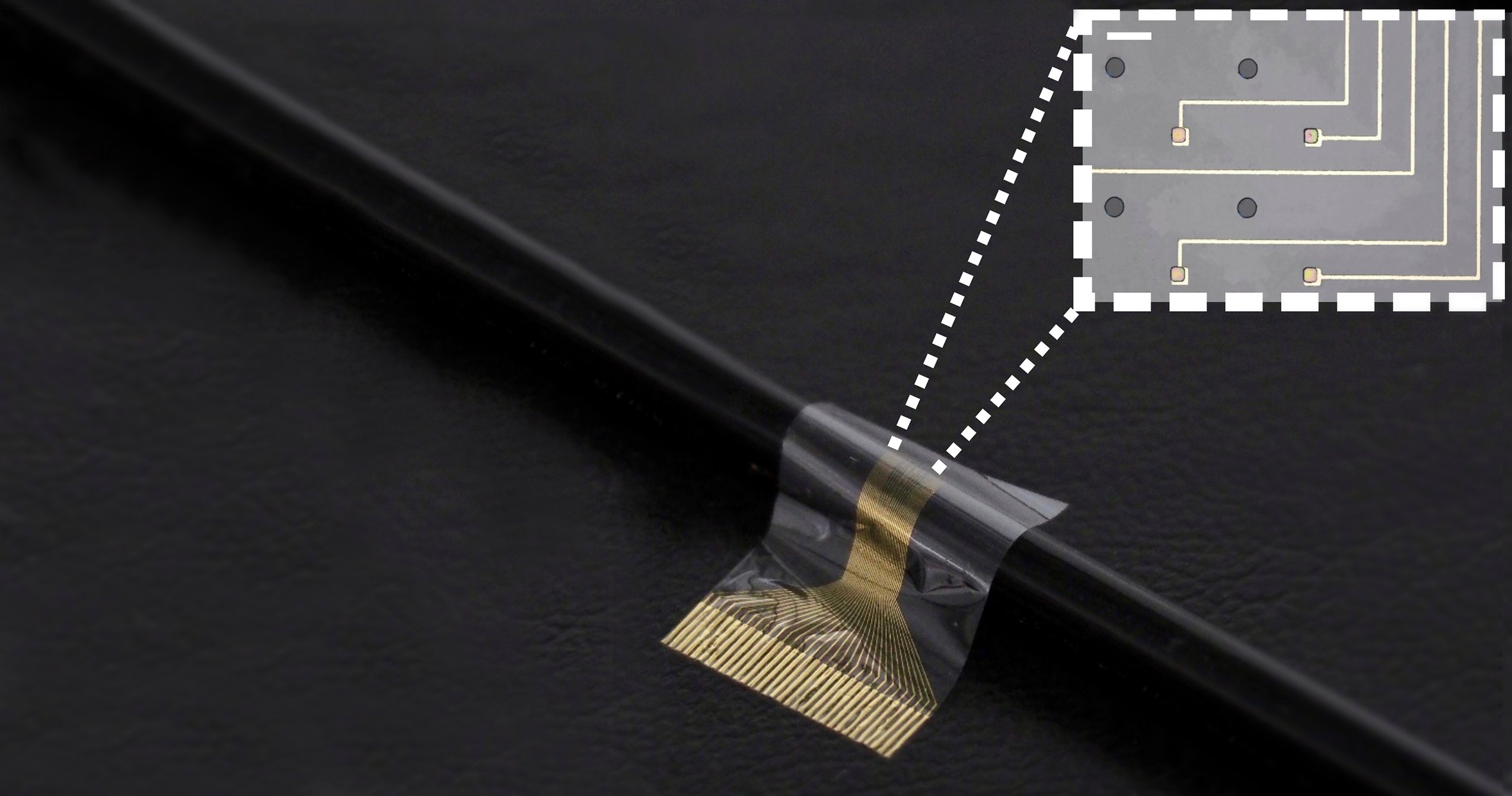Publication
Functional neurological restoration of amputated peripheral nerve using biohybrid regenerative bioelectronics
A neural implant device that combines flexible electronics and a layer of muscle cells shows promise for the restoration of limb function to amputees and others who have lost the use of their arms or legs.
Read more

A neural implant device that combines flexible electronics and a layer of muscle cells shows promise for the restoration of limb function to amputees and others who have lost the use of their arms or legs.
The development of neural interfaces with superior biocompatibility and improved tissue integration is vital for treating and restoring neurological functions in the nervous system. A critical factor is to increase the resolution for mapping neuronal inputs onto implants. For this purpose, we have developed a new category of neural interface comprising induced pluripotent stem cell (iPSC)–derived myocytes as biological targets for peripheral nerve inputs that are grafted onto flexible electrode arrays. We show long-term survival and functional integration of a biohybrid device carrying human iPSC-derived cells with the forearm nerve bundle of freely moving rats, following 4 weeks of implantation. By improving the tissue-electronics interface with an intermediate cell layer, we have demonstrated enhanced resolution and electrical recording in vivo as a first step toward restorative therapies using regenerative bioelectronics.
Read more
Rochford and Carnicer-Lombarte et al.
Science Advances
2023
Featuring opti-ox enabled skeletal myocytes iPS cell line